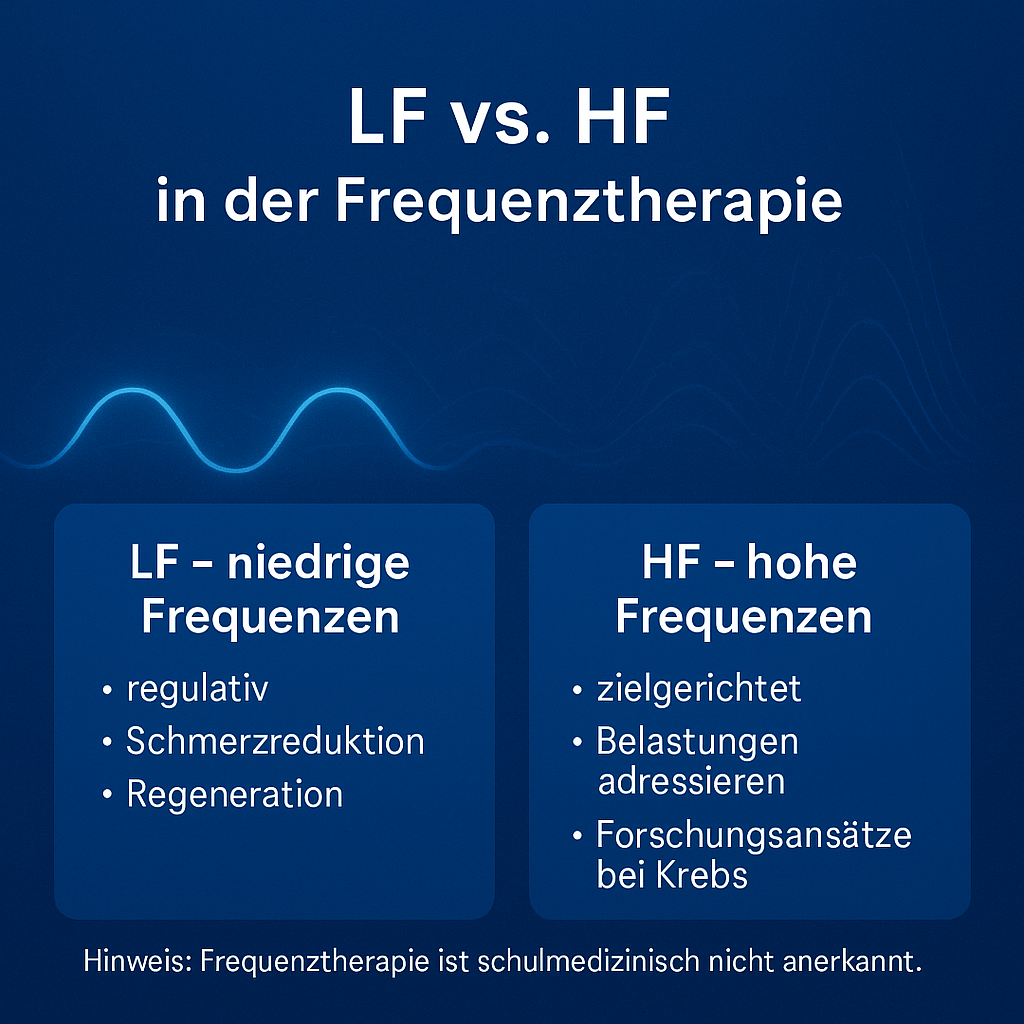
Difference between low frequencies (LF) and high frequencies (HF) in frequency therapy
Frequency therapy is based on the assumption that every cell, every organ and every pathological process has a specific oscillation pattern. In practice, a distinction is often made between low frequencies (LF) and high frequencies (HF). But what does this mean in concrete terms - and what role do they play in the treatment of diseases such as cancer?
What are low frequencies (LF)?
Low frequencies are usually in the range of a few hertz to a few hundred hertz. They are considered "slower" and have a stronger regulatory effect on the organism. LF are used to release blockages in the energy flow, reduce pain and stimulate the regeneration of the body.
- Promote cell regeneration
- Support the body's own self-healing powers
- Can be helpful for chronic complaints and cancer aftercare
What are high frequencies (HF)?
High frequencies range from a few kilohertz to the megahertz range. They are much "faster" and can penetrate deep into tissue and cells. This makes them particularly suitable for specifically influencing pathological structures. In frequency therapy, HF is often used to address contaminants such as toxins or microorganisms.
- Targeted influencing of pathological processes
- Support for infections, stress and degenerative diseases
- Research approaches in the field of cancer therapy using high-frequency pulses
Combination of LF and HF
Modern frequency therapy has shown that the combination of LF and HF is particularly effective. While LF has a harmonising effect on the entire system, HF can be used specifically against disorders or pathological structures. Together, this results in a holistic approach that supports both regulation and targeted treatment.
Frequency therapy and cancer
There is great interest in the effect of frequencies, particularly in the field of cancer. Some studies indicate that certain high frequencies can influence the growth of tumour cells. At the same time, low frequencies help to strengthen the immune system and improve quality of life.
Note: Frequency therapy is not recognised by conventional medicine and does not replace a medical diagnosis or therapy. However, it can provide valuable support as a complementary method.
Conclusion
Low frequencies (LF) and high frequencies (HF) are two basic approaches in frequency therapy. Both act on different levels of the body - LF more regulative and strengthening, HF more specific and targeted. Their combination opens up a broad therapeutic spectrum, also in the support of patients with serious illnesses such as cancer.
Disclaimer: Frequency therapy is not recognised by conventional medicine. It does not replace an examination or treatment by a doctor or alternative practitioner...

